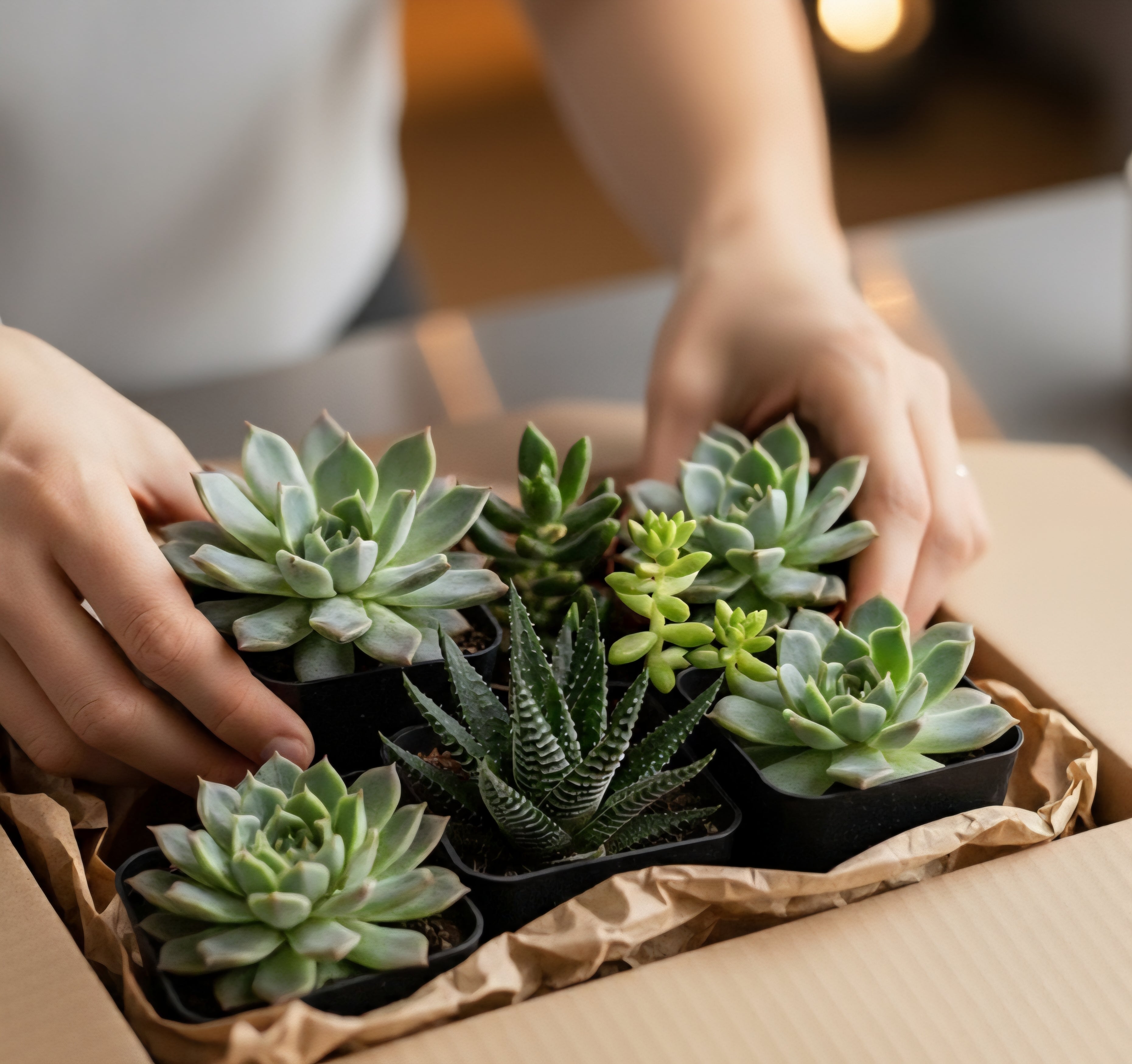Care Guide
Caring for Your Simply Succulents: A Guide to Happy & Healthy Plants
Welcome to your new plant family! Succulents are among the most resilient and rewarding plants to care for, but a little guidance goes a long way. This page will walk you through everything you need to know to ensure your new succulent thrives and brings you joy for years to come.
Unboxing & Acclimating
Your plant has been on a journey to reach you. As soon as your package arrives, gently open it and carefully remove your new plant from its packaging. It's common for a few lower leaves to be loose or for the soil to have shifted during transit, but this is completely normal and no cause for concern. Place your new succulent in a bright, indirect light spot for a few days to let it adjust to its new environment, as you should avoid placing it in direct, intense sun right away to prevent sunburn.
Repotting
While your plant is fine in its nursery pot for a while, repotting it will give it room to grow. You should choose a pot that is slightly larger than the current one and, most importantly, has a drainage hole, as this is crucial for preventing root rot. Succulents hate soggy feet, so use a well-draining succulent or cactus mix, or create your own by mixing potting soil with perlite or pumice to improve drainage. When you are ready to repot, gently remove the plant from its nursery pot, knocking off any excess old soil. Place it in the new pot, fill around it with your fresh soil mix, and lightly pat it down. Finally, allow your newly repotted plant to settle for about a week before its first watering to give any tiny damaged roots time to heal.
Watering
Watering is the most critical step in succulent care. When in doubt, it’s always better to underwater than to overwater! You should wait until the soil is completely dry before watering. A simple way to check is to stick your finger about an inch or two into the soil; if it feels dry, it’s time to water. When you water, use the "soak and dry" method by giving the plant a thorough soaking until water runs out of the drainage hole. The watering frequency depends on your climate, humidity, and the season. You may water more often in the hot summer months (once every 1-2 weeks) and much less frequently in the winter (once a month or less).
Sunlight
Overview: Sunlight is what keeps succulents healthy and vibrant, but not all plants have the same needs. While most succulents love bright light, some exotic varieties prefer shade or indoor conditions to protect their delicate foliage. To ensure your specific plant is getting the right amount of sun, always refer to its individual product description or check its USDA hardiness zone. Intense sunlight and cooler temperatures can cause your succulent to "blush" with beautiful reds, pinks, and purples—a sign of a happy, healthy plant.
Too Much Light: If your plant is not used to direct sun, it can get sunburned, with the leaves developing white or brown spots. If you notice these spots, simply move the plant to a slightly shadier spot for a few days to let it recover and acclimate.
Not Enough Light: If your plant doesn't get enough light, its leaves will start to space out and the stem will stretch dramatically towards the light source, a phenomenon known as etiolation. If you see this stretching, it's a clear sign that your plant needs to be moved to a brighter location to maintain its compact shape and health.
Fertilizing
Succulents don't need much fertilizer, but a little can help during their active growing season. Only fertilize in the spring and summer. When you do, use a balanced, water-soluble fertilizer specifically for succulents or houseplants and dilute it to half-strength. You should avoid fertilizing in the fall or winter, as the plant is dormant.
Pests & Problems
While succulents are resilient, you should keep an eye out for a few common issues. Overwatering is the most common problem, and signs include mushy, translucent, or yellowing leaves. You should also watch for pests like mealybugs, which appear as small, white, cottony insects on the plant. You can treat them by dabbing them with a cotton swab dipped in rubbing alcohol.
Remember, every plant is unique, and a little observation goes a long way. Enjoy your beautiful new succulent and don't hesitate to reach out to us with any questions!

From our farm...

